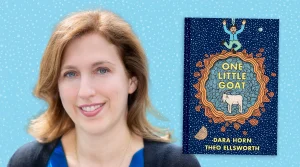Last time, we looked examples of how half a millennium of illustrated haggadot have become a barometer of life of Jews in the Old World and the New. Today, we continue our survey and look at a most surprising controversy over the revered Maxwell House haggadah!
If you have a LOT of time to spare, you can browse through the over 800 (!) vintage haggadot that have been scanned and uploaded to HebrewBooks.org. For the most part, these are not artistic gems. Most consist of the Hebrew text, some commentary and perhaps a translation into Yiddish, German, French, Ladino, Arabic, Polish, Dutch, Hungarian or English. But they also present an important window into what our grandparents – and their grandparents – held in their hands when they gathered around seder table. Here are two of my favourites, one sublime, one bizarre.
- A simple yet beautifully illustrated edition with stunning calligraphy by Saul Raskin (1941)
- And in what might go down as the the most puzzling Haggadah promotional giveaway ever, there’s the one from “Prof. A. Hochman, MIND-READER, 159 Rivington St. N.Y.”
Excerpt from the Geismar Haggadah, 1927
If you want gorgeous, there’s the newly published book Signs and Wonders: 100 Haggada Masterpieces by University of Toronto Art historian Adam Cohen. Unfortunately, his book does not have a detailed website. However, you can enjoy an hour-long lecture by Professor Cohen which has been archived online. I was particularly struck by two Haggadot from 1920s Germany which illustrate the “highs and lows of world events, as Prof. Cohen puts it. In the Steinhardt Hagada, the artist illustrates the pain of the Israelites as a product of his experience as a German soldier in the First World War. On the other hand, Otto Geismar’s Haggadah uses a few simple lines to tell the Exodus in what to me looks almost whimsical. (Register for free at WebYeshiva.org and you can download Prof. Cohen’s video.)

For insights into how the seder has been observed in Sephardic homes, take a look at the Sephardi Connection site. For example, among North-African Sephardim, after Mah Nishtana is recited, the seder leader would leave the room and come back with a walking stick and the afikoman in a cloth on his shoulder. The children would ask: “Where are you coming from?” And he would proceed to tell the story of his exodus from Egypt. On the other hand, the haggadah adds, “Note: stealing the afikoman is an Ashkenazi tradition.” When the Sephardi seder concludes, “some take the haroseth and put it in five places (khamsah) at the entrance of the house (near the mezuzah, on the door posts, etc.) for good luck.”
Then there’s the haggadah that’s not really a haggadah – except in the mind of author Terry Heyman who imagined what you would use if your daddy were President of the United States. The result: THE KUSHNER FAMILY PASSOVER HAGGADAH.
It seems their seder uses familiar objects but the symbolism differs.
- PARSLEY: The parsley on our Seder plate reminds us of spring and the earth’s natural bounty, which does not need cumbersome government regulations. We dip the parsley into salt water representing the bitterness of liberal tears. Then eat.
- HAROSET: A yummy salad of apple, nuts and cinnamon which shows off Ivanka’s cooking skills and her relatable desire to be a sweet and caring mother to her children. #familytime
- WELCOMING ELIJAH: We set aside a special cup of wine for the prophet Elijah. Legend says Elijah will return to earth to lead the way for peace. Unfortunately, we are unable to open our door to welcome Elijah as tradition dictates due to the protesting crowds outside.
I was surprised to see how much controversy can be stirred up by one haggadah. I’m not referring to haggadot that promoted a controversial, contemporary theme. The one just promoted coffee. The Maxwell House Passover Haggadah is not illuminated. And it doesn’t have a remarkable commentary. But many people reserve warm memories for the Maxwell House Passover Haggadah. According to Maxwell House press release has distributed nearly 40 million copies of its blue and white Haggadah since the 1930s making it “the United States’ longest-running promotion by a major brand.”
Although many people remember that haggadah fondly, Andrew Silow-Caroll is not convinced. He asks, Did Maxwell House kill the American Passover Seder? “Who knows how many Jewish children, numbly and obediently flipping through the pages of the blue and white Maxwell House, came to regard the seder as a stultifying arcane ritual, a regimented recitation of thees and thous, an endurance test as lacking in levity as leaven? Is it only a coincidence that in the 70 years since Maxwell House began distributing tens of thousands of haggadot as promotional items, the intermarriage rate among Jews has soared?”

On the hand, we haveRabbi Scott Rosenberg of Temple Reyim of Newton, Mass. Who comes to the defence of the venerable haggadah. He says says that we owe it a great deal. “As a product of the Great Depression, it reminds us of some of the hardships we faced as an American Jewish community struggling to survive difficult economic times. If it were not for the generosity of Maxwell House, many families during the 30’s and 40’s would not have had haggadot. This classic should be part of every synagogue library.”
A haggadah that’s good to the last song.






